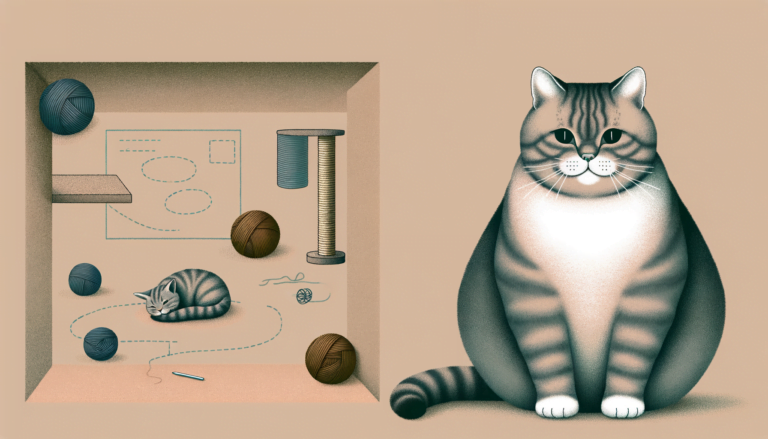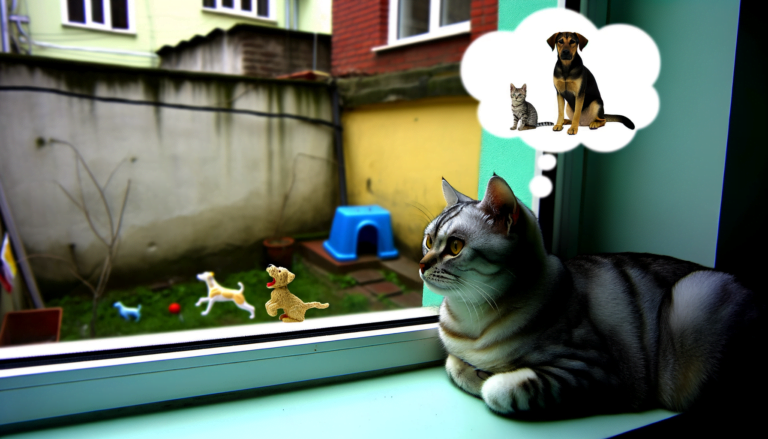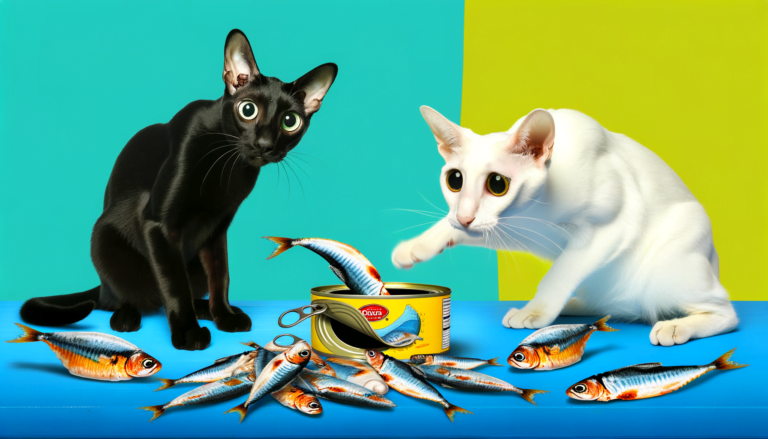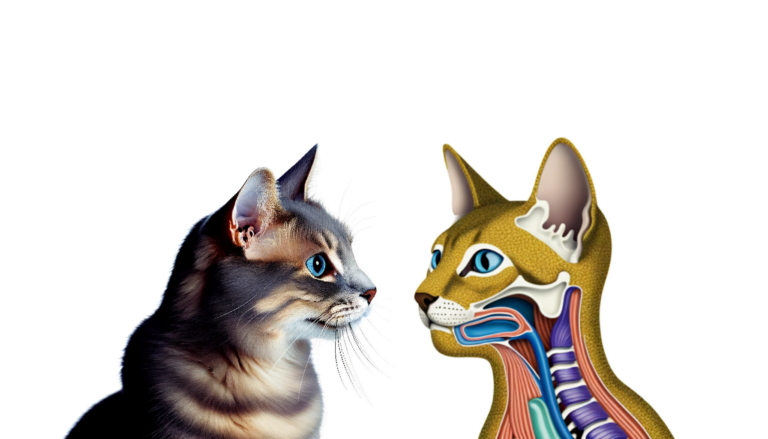Unlocking the Mystery: Do Javelinas Pose a Threat to Our Feline Friends?
No, javelinas do not eat cats. These peccaries, or ‘skunk pigs’ as they are otherwise known, are omnivores, meaning they consume both plant and animal matter. Their diet predominantly consists of cacti, fruits, roots, tubers, and sometimes small animals or insects. However, they do not typically prey on cats and it is uncommon for them to engage in such behavior. Despite their somewhat intimidating appearance, javelinas usually pose no direct threat to cats if not provoked.
Understanding the Diet and Behavior of Javelinas

Javelinas, or peccaries, are omnivores with a diet predominantly including plant matter, such as tubers, roots, bulbs, and in opportune moments, succulent vegetation. Their caloric intake, however, may occasionally be supplemented by animal matter, such as small bugs. Despite their varied diet, the intake of domestic animals is rarely observed.
In terms of behavior, these creatures usually inhabit the desert regions, living in close-knit family groups. They’re absolute creatures of habit and have a strict schedule of sleeping during the hottest parts of the day and foraging during the early morning or late evening.
Thus, understanding their behavior gives us insight into the limited likelihood of spontaneously seeing a lone javelina on your property. The odds of them posing any direct threat to house cats can be assumed to be low, provided cats avoid direct interaction with these wild creatures—isolating themselves, especially during javelina active times.
Preventive Measures for Protecting Cats from Predators

Protecting cats from threats such as the wild javelinas begins by understanding the predator. Javelinas, like other predators, are more active during dusk and dawn. Keeping your feline friends indoors during these times can cut down on potential encounters. Equally essential is providing a safe outdoor environment for cats. A secure, fenced yard that deters any wildlife from entering can ensure your cat’s safety.
One effective preventive measure is installing a cat enclosure or ‘catio’. This allows cats to experience the outdoors without exposing them to potential harm. Another method to safeguard cats is by using animal deterrent devices. Sprinkler systems with motion detectors, bright lights and noise can dissuade wildlife from exploring your yard and endangering your cats.
Finally, training your cat to respond to a recall command can be a lifesaver. This can help call them back if they venture out during risky periods. Also, keeping their necessities like food trays indoors helps them frequently return, minimizing outdoor exposure. Remember, the safety of domestic cats depends largely on the environment we create for them.
Interaction of Javelinas with Small Animals
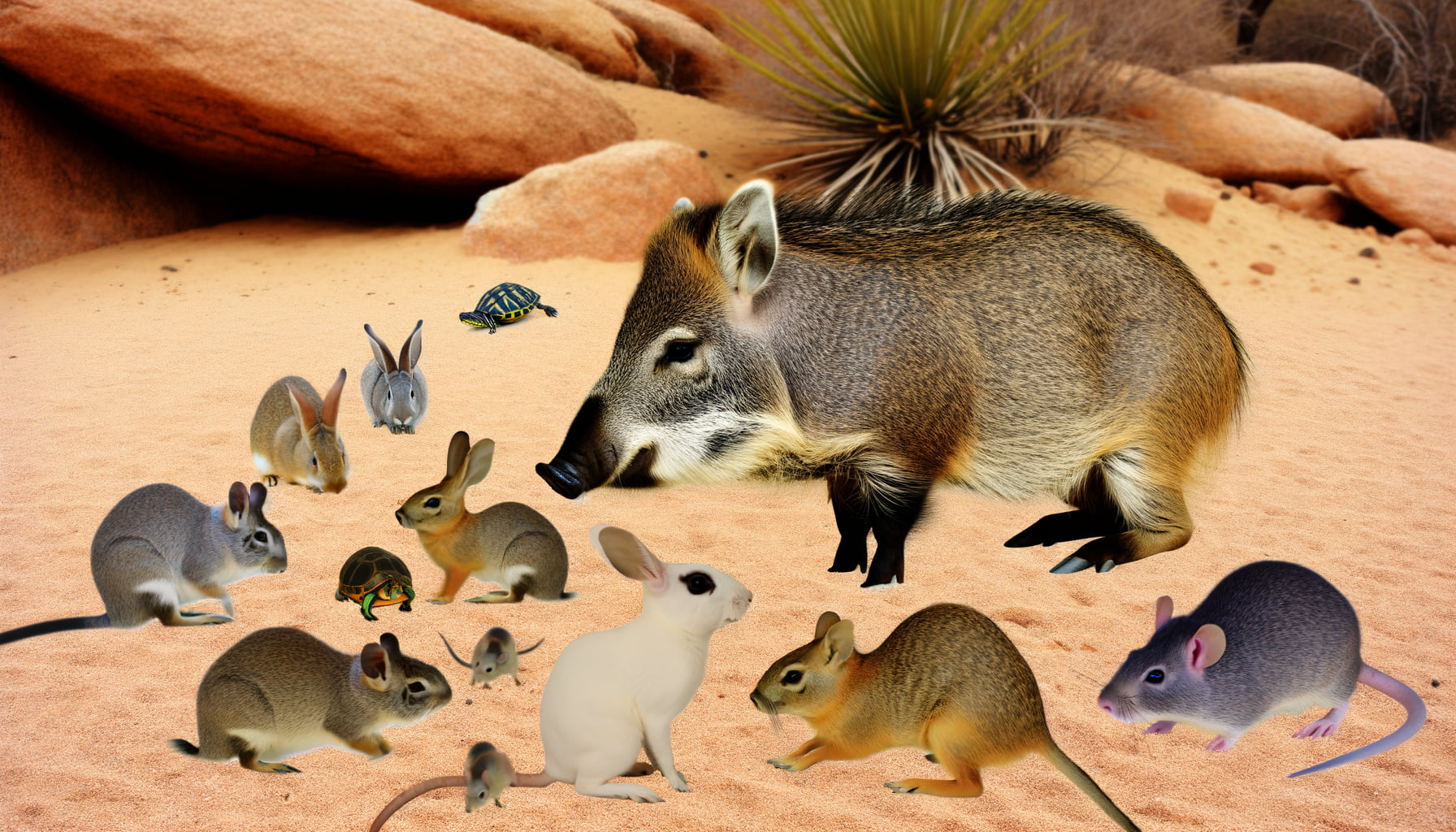
When discussing javelinas and their interactions with small animals, it is important to know that these animals, although omnivorous, primarily consume plant material. Their diet includes roots, tubers, and various vegetation. Consequently, while they possess the necessary dentition to be potential predators, their actual behavior trends towards non-aggression. They generally display hostility only when feeling cornered or when their young are threatened.
However, this does not necessarily translate to peaceful coexistence with other smaller animals such as house cats. Due to their bulky size and unpredictable nature, Javelinas may unintentionally intimidate or harm smaller creatures in their vicinity. Moreover, they often travel in large groups known as ‘squadrons’, inadvertently escalating the potential for fear or harm.
Specific incidents of Javelinas harming cats have not been widely documented. This could be due to the nocturnal nature of cats versus the diurnal behavior of Javelinas. Nevertheless, it would be remiss to categorically dismiss the potential risks. Given the dearth of concrete evidence, it is advisable to monitor interactions between these wild creatures and our feline friends closely.
Potential Threats to Cats from Wildlife, Including Javelinas
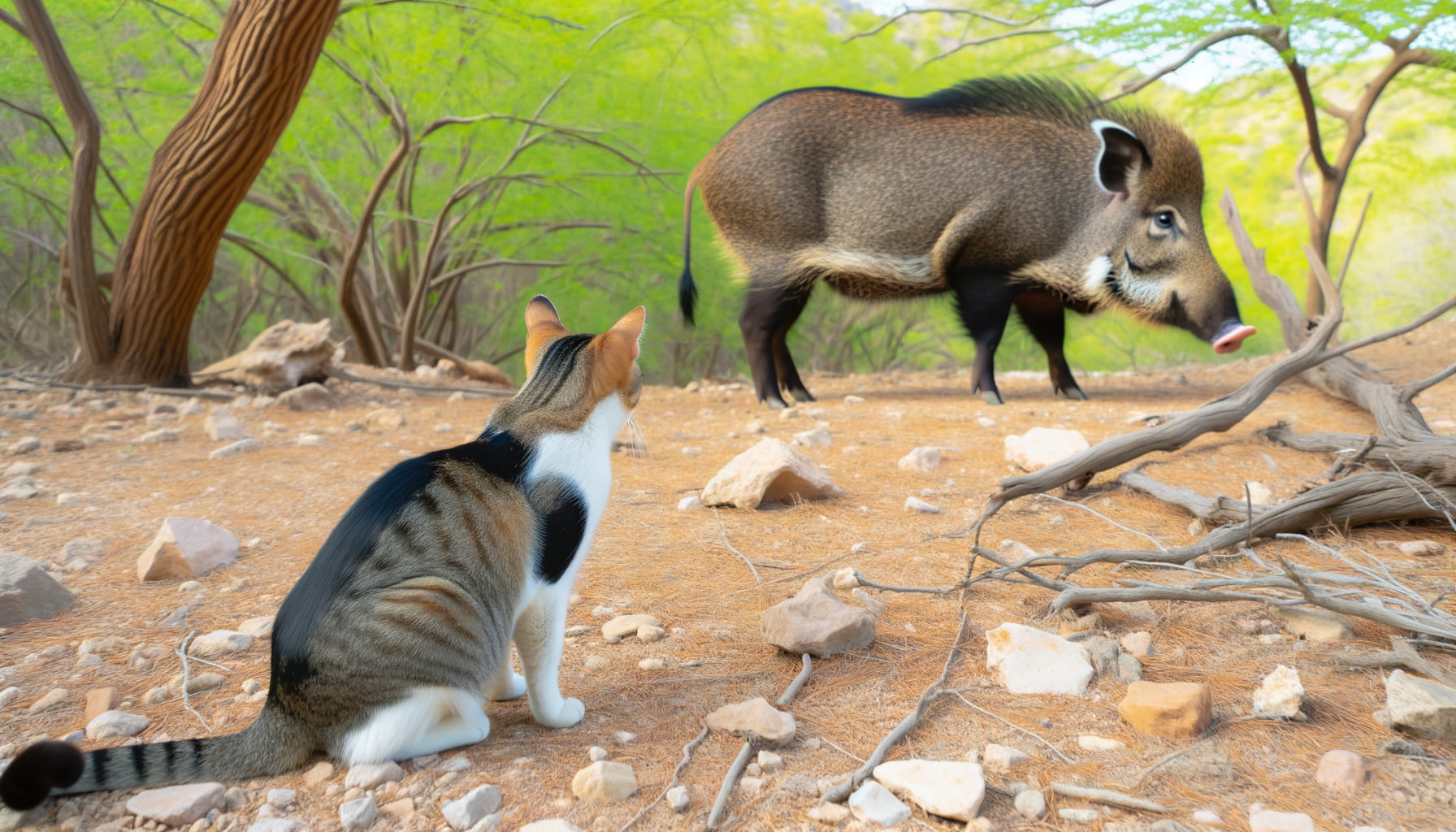
Most wildlife poses a minimal threat to cats. Still, felines living close to nature reserves or secluded areas can encounter a few more menacing species, one of these being the Javelina. Although not typically aggressive towards cats, there’s always a risk associated with wild animals, that their behavior can be unpredictable when they feel cornered or threatened.”
Incredibly, the primary diet of a Javelina is plants, insects, and small animals, infrequently including small pets. Javelinas, however, are not known to actively hunt cats or view them as a primary food source. Most threats arise when a Javelina feels that their young ones are in danger, leading to protective and potentially aggressive behavior.
Despite the relative peace between felines and Javelinas, it’s essential to remain cautious. Remember that any wildlife can pose a threat in certain circumstances. As cat owners, understanding the behavior of wildlife, particularly local species, is key to ensuring the safety and wellbeing of our beloved pets.
Conclusion
While javelinas may have a reputation for being intimidating, it is important to remember that our feline friends are resilient and adaptable creatures. Despite potential encounters, taking necessary precautions can help mitigate any potential risks that may arise.
By understanding the behaviors of both javelinas and cats, pet owners can create safe environments that prioritize the well-being of their beloved companions. With proper management and awareness, the potential threat of javelinas can be minimized, allowing our feline friends to roam freely and safely in their surroundings.

